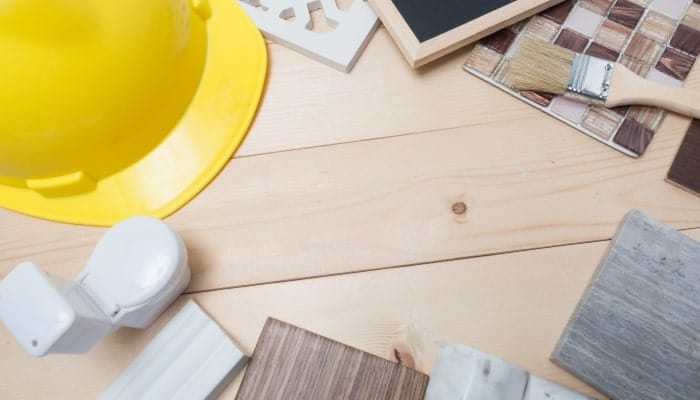When it comes to the new age of construction, the choice of building materials matters for the look, functionality, and sustainability of your architectural projects. From skyscrapers that pierce the clouds to sprawling complexes that merge seamlessly with nature, the materials you use define the structure as a whole and the environmental impact. Stabilit America stands at the forefront of this innovation, offering cutting-edge materials that blend high performance with environmental responsibility.
Fiber Reinforced Plastics (FRP): A Modern Marvel
FRP has really started to surge in popularity within the architectural community for its remarkable properties and versatility. Here’s why this material is becoming the go-to choice for innovative construction:
Lightweight Yet Strong
FRP’s impressive strength-to-weight ratio allows for easier handling and less structural stress, making it the perfect choice for expansive projects where traditional materials might be too cumbersome. This will allow you to be more creative and expansive in your architectural designs without needing heavy support systems. Stabilit America’s FRP products, such as the Resolite panels, demonstrate this capability, supporting substantial loads while providing a lighter alternative to metal or concrete.
Corrosion Resistance
FRP’s resilience to corrosive environments is unmatched by many of the conventional materials out there. This resistance extends the lifespan of your buildings that are exposed to harsh weather conditions or corrosive chemicals. As a result, it reduces maintenance costs and replacement frequency. For structures near the ocean or in industrial settings where corrosive agents are more prevalent, FRP remains intact and vibrant.
Flexibility in Design
The adaptability of FRP is another key benefit. You can get it fabricated in different colors and finishes and molded into complex shapes that would be difficult or potentially impossible to get with materials like steel or wood. This versatility opens up so many new design possibilities, from curved facades to intricately patterned overhangs. Our architectural panels, including those used in skylights and covered walkways, capitalize on this flexibility, allowing architects to implement dynamic, eye-catching designs that stand out.
Sustainability
In today’s construction world, sustainability is starting to become a requirement for all of your products. FRP excels here as well, contributing to building projects that are innovative and environmentally responsible. FRP’s durability and low maintenance needs mean reduced waste and energy consumption over the building’s life. FRP’s inclusion in LEED-certified projects promotes eco-friendly construction practices.
Polycarbonate Multiwall: The Future of Roofing and Glazing
Polycarbonate multiwall panels are another one of the top materials used in architectural projects today. They are known for durability and light-transmitting capabilities, making them a favorite for roofing and glazing applications, including the following:
Superior Insulation
The unique multiwall structure of these panels provides outstanding thermal insulation, helping maintain comfortable indoor temperatures year-round. This design feature helps reduce the heating and cooling costs for residential and commercial buildings, making it an economically smart choice. Our polycarbonate multiwall panels, which are backed by a 10-year warranty against loss of light transmission and yellowing, exemplify this insulation capability.
Impact Resistance
Engineered to withstand severe environmental conditions, polycarbonate panels offer remarkable resistance to impacts from hail, debris, and wind. Their toughness makes them perfect for locations that tend to have frequent inclement weather, providing longevity and durability. This resilience is extremely important for protecting the building interior from weather-related damage and reducing the need for costly repairs.
UV Protection
Each panel is equipped with a co-extruded layer that blocks out harmful UV rays. The light transmitted is safe and preserves the material’s clarity and color over time. This UV protection also contributes to the health and comfort of building occupants by reducing sun glare and preventing UV-induced wear on interior furnishings.
Aesthetic Flexibility
Available in a variety of tints and finishes, you can incorporate these panels into any design scheme, from modern commercial complexes to cozy residential homes. The versatility in appearance allows you to create visually appealing designs that enhance the aesthetic value of any structure without compromising on performance.
Concrete, Glass, and Steel: The Traditional Trio
While amazing innovative materials like FRP and polycarbonate are becoming more and more popular in architectural projects, the more traditional materials like concrete, glass, and steel continue to keep their place in construction, given their proven reliability and useful characteristics.
- Concrete: Most known for its durability and compressive strength, concrete is still a fundamental element in building construction, supporting everything from high-rise towers to residential foundations. It provides excellent thermal mass, helping to stabilize indoor temperatures and reduce heating and cooling demands. However, unlike FRP, concrete is susceptible to cracking over time and lacks the corrosion resistance that FRP panels offer, making it less effective in environments that get exposed to harsh chemicals or saltwater.
- Glass: Glass transforms buildings by bringing in natural light and creating a visual connection with the surroundings. Its recent technological advancements have improved its thermal insulation and safety features, making it more practical and energy-efficient. However, glass is fragile compared to FRP panels, which provide similar light-enhancing qualities without the vulnerability to impact and ongoing maintenance challenges.
- Steel: The structural flexibility and high tensile strength of steel make it indispensable for creating dynamic, innovative building designs that require long spans and minimal structural bulk. Steel is highly recyclable, aligning with sustainable building practices. Nevertheless, FRP stands out in environments where corrosion resistance is required, as it does not require the same level of maintenance or treatment to withstand moisture and chemical exposure.
Stabilit America: Leading Innovation in Construction Materials
Stabilit America is instrumental in pushing the boundaries of what’s possible in construction. We provide materials that offer superior performance and environmental benefits, helping shape the future of architecture. Our FRP and polycarbonate panels catalog is full of options that meet the current demands of the construction industry and anticipate future trends and needs.

Explore Innovative Building Solutions with Stabilit America
The materials you choose for your buildings influence how your customers interact with our environment, our ongoing maintenance costs, and our commitment to sustainability. In a world where architecture and materials science intersect more than ever, embracing materials like FRP and polycarbonate from Stabilit America supports cutting-edge design and promotes a sustainable future. Contact us to find out how our FRP products by applications can help your projects today.


